20+ Hotel Management Tips You Haven’t Thought of Before

Hotel management is a high-stakes, high-speed business — but we don’t have to remind you of that.
One shift can expose every weak point in your operation…or prove how strong your systems really are. Guests expect flawless service, staff expect fair treatment, and ownership expects results. The only way to deliver on all three is to sharpen up your management techniques.
This guide packs in 20+ fresh hotel management tips that go beyond the obvious. You’ll find ideas for boosting staff retention, unlocking new revenue streams, elevating your marketing efforts, and leveraging tools that make daily operations smoother and more profitable.
Let’s dive in:
Top 5 hotel management best practices
The competitors outperforming you have probably figured out how to automate and effortlessly streamline their operations.
Operational excellence is the result of cross-trained teams, connected systems, and leaders who act quickly on guest feedback. When those elements work together, a hotel runs smoother, adapts faster, and consistently delivers better results.
Here are some high-level hotel management tips you can implement in weeks, not quarters:
1. Invest in training to boost employee retention
Hospitality is in the midst of a staffing shortage, so employee retention is more critical than ever. And high employee turnover isn’t just inconvenient, it’s expensive. According to a study by Cornell, turnover costs for a hospitality business average nearly $6,000.
Tons of hospitality workers cite lack of training as a primary reason for leaving a job. They feel thrown into the deep end without resources or guidance, and leave out of frustration.
Investing in solid training pays dividends when employees stick around longer.
What to do this quarter:
- Stand up a micro-training library (5-10 minute modules) for the top 10 issues that drive rework (ex: in-room-technology issues, housekeeping QC, amenity replacements).
- Cross-train for coverage gaps: front desk ↔ housekeeping runners; F&B ↔ events; maintenance ↔ room tech checks.
- Add a “first 14-days” ladder for new hires (shadow → co-pilot → solo with spot checks).
2. Boost the guest experience by prioritizing staff satisfaction
The best and most memorable hotel stays aren’t necessarily the most luxurious or indulgent. They’re often the ones with the best service.
The tailored recommendations from the concierge. The friendly note on the nightstand from housekeeping. The warm welcome from the front desk.
These little moments compound to create an unforgettable experience. And those little moments are the result of happy, motivated employees who bring their A-game to every shift.
Prioritizing staff satisfaction and curating an employee-centric work environment — through things like recognition, fair pay, and modern tipping — pays off in loyalty on both sides of the front desk.
What to do this quarter:
- Use your staff app or communication platform for daily kudos and shoutouts.
- Stand up a “voice of staff” anonymous survey every two weeks. Act visibly on at least one suggestion per month.
- Help staff (including non-guest-facing employees) get bigger and more frequent tips by investing in a digital tipping system like eTip
3. Invest in technologies that integrate with each other
Technology is supposed to simplify your operations. But when your systems don’t integrate with each other, they just create new headaches.
Too many hotel managers waste hours reconciling PMS data with scheduling, reporting, or tipping systems. Investing in technology is a solid first step to better hotel management, but choosing the right technologies that will work in tandem is the real goal.
What to do this quarter:
- List every system in use (PMS, channel manager, staff comms, tipping, payroll). Highlight where manual handoffs occur.
- Prioritize integrations that save labor hours.
- Pilot one new automation — for instance, a late check-out purchase that automatically updates housekeeping rosters.
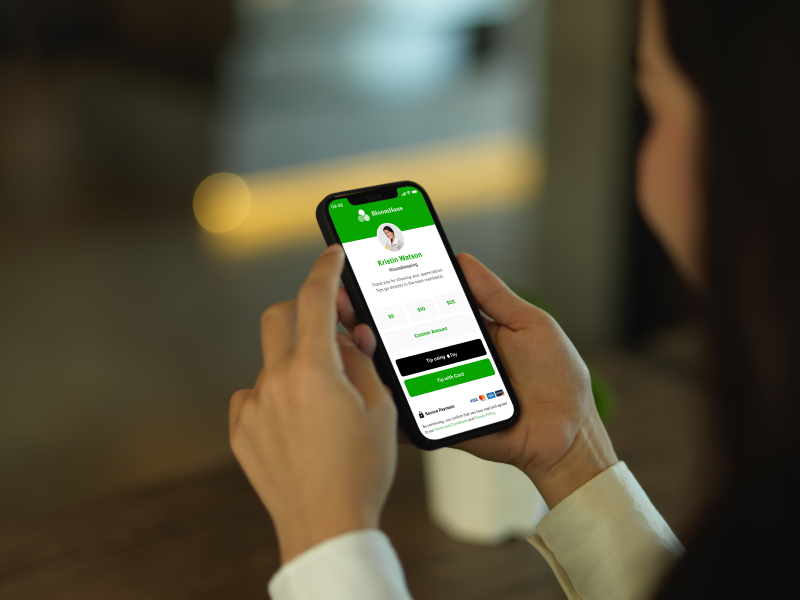
4. Monitor competitors and adapt quickly
Hospitality is hyper-local, so your comp set often matters more than macro trends. If three nearby hotels are bundling parking, your unbundled rate suddenly looks less appealing. Staying agile doesn’t mean copying what competitors are doing, it means spotting gaps in your hotel quickly and filling them in a way that complements your brand.
What to do this quarter:
- Run a weekly “comp scan” — just 30 minutes dedicated to checking competitor rates, OTA promos, and review themes.
- Monitor your competitors’ guest reviews bi-weekly for trends. If “slow Wi-Fi” or “dated rooms” crop up often, use that in your marketing to highlight your strengths.
5. Design micro-moments that surprise and delight
Travelers today crave experiences that feel personal and authentic. And micro-moments — those small, thoughtful touches — are often what guests remember most.
They don’t cost much, but they create brand stickiness and repeat business.
What to do this quarter:
- Build a “micro-moment menu” of 12 small touches (ex: snack from a local bakery, handwritten notes, Spotify playlists curated by staff). Rotate weekly.
- Stock housekeeping closets with cards, ribbons, and snacks so they can implement without extra steps.
- Empower frontline staff to decide which micro-moment to use based on the guest profile.

Hotel revenue management tips
When most hotel managers hear “revenue management,” they think spreadsheets and room rates. But it’s much bigger than that.
Great revenue strategy means seeing your entire property as an asset and finding smart ways to make each part of it work harder. Here are a few practical ways to get started:
1. Optimize room pricing with dynamic models
Static pricing leaves money on the table. Dynamic pricing models adjust rates automatically based on demand signals, competitor activity, and local events.
The goal isn’t just higher ADR, it’s better revenue capture without sacrificing occupancy.
What to do now:
- Layer in event calendars and flight data so pricing shifts ahead of peak demand.
- Use fenced offers (e.g., advance purchase, non-refundable with perks) to capture value from price-sensitive segments.
- Review “regret and denial” reports monthly to see where guests bounced because of price.
2. Diversify revenue streams
If your only revenue stream is rooms, you’re probably missing out on some major money-making opportunities.
Look for overlooked assets and services that guests already value. The best strategies package convenience, exclusivity, or time savings.
What to do now:
- Introduce add-ons like early check-in, guaranteed late check-out, or day-use passes for business travelers.
- Turn idle amenities into bookable products (e.g., pool cabanas, rooftop access, fitness classes).
- Offer practical extras — like gear rentals, valet packages, pet amenities — through pre-arrival emails.
3. Maximize direct bookings with better digital presence
Every booking through an online travel agency (OTA) like Airbnb or Booking.com chips away at profit margins. Direct bookings protect your bottom line and give you more guest data that you can leverage later.
What to do now:
- Optimize your site for mobile — more than 50% of travelers book on their phone.
- Offer a “book direct” perk (like a complimentary drink, parking credit, or loyalty points).
- Build hyper-local landing pages (e.g., “Hotel near [venue] with free shuttle”) using insights from guest reviews.
4. Leverage upselling and cross-selling at check-in and online
Upselling works best when it feels personal and timely, not pushy. Done right, it turns routine transactions into high-margin revenue.
What to do now:
- Add pre-arrival upsells like room upgrades or dining credits to confirmation emails and text reminders.
- Train your front desk staff to offer a maximum of two upgrade options to avoid decision fatigue.
- Equip staff with scripts tied to guest context (“I see you booked for two nights — would you like to add late check-out on Sunday for just $50 more?”).
5. Audit underutilized spaces to unlock new revenue
A lot of hotels have “dead zones” — think meeting rooms used twice a year, corners used just for random storage, and underbooked amenities. With a little creativity, these can become revenue engines.
What to do now:
- Walk the property quarterly with your department heads and flag any space that isn’t booked or used more than 50% of the time.
- Test small pilots — like a meeting room as a coworking pod, an underused patio as a yoga class venue, or a lobby alcove as a pop-up retail corner. Assess performance and keep experimenting.
- Market underused spaces via QR codes, pre-arrival emails, and social media to gauge traction.
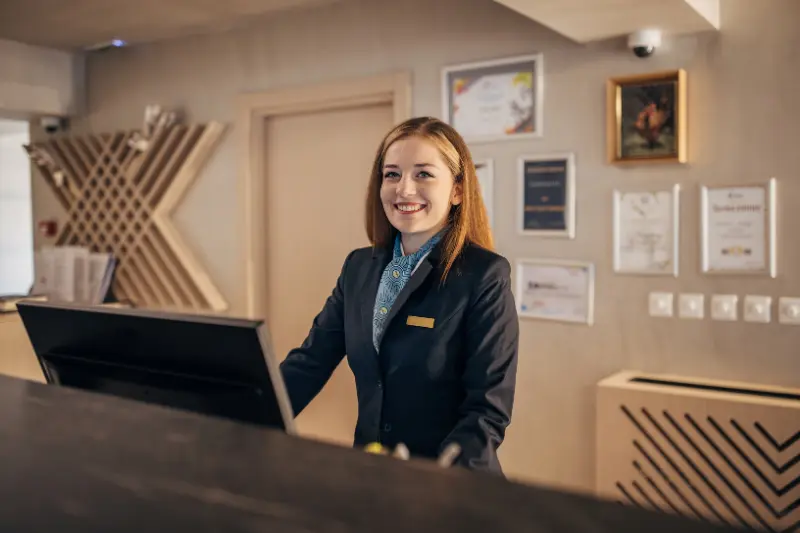
Hotel marketing tips
Hotel marketing requires thinking outside the box, beyond glossy ads or generic loyalty programs. Modern travelers research across dozens of touchpoints — Google, OTAs, Instagram, TikTok, and even word-of-mouth.
These days, you need to get creative and turn guest feedback, local context, and digital tools into marketing fuel.
1. Use review insights to shape hyper-local SEO content
Customer reviews are basically free keyword research. If multiple guests rave about your “rooftop bar with stadium views,” in their online reviews, that’s a search phrase worth owning.
What to do now:
- Run a word cloud analysis of your last 200 reviews. Highlight recurring descriptors (e.g., “family-friendly,” “walkable,” “best breakfast”).
- Build one landing page or blog post per theme (e.g., “Best hotel near [stadium] with rooftop views”).
- Update your Google Business profile to mirror those phrases
2. Leverage guest-generated content
Your guests are already creating content that’s more persuasive than any ad campaign.
Leverage the photos, videos, and stories they share online during and after their stay. Repost them on your own social media accounts, or use them (with permission) in other marketing content.
What to do now:
- Place a card or digital welcome message encouraging guests to share their stay with a branded hashtag or QR code that links to your Instagram.
- Run a monthly contest (e.g., “Best sunset view photo wins a free weekend stay”) to motivate participation.
- Curate and repost the strongest content across your owned channels — social media, newsletters, and even on lobby screens.
3. Personalize offers using booking and stay data
One-size-fits-all promotions waste money. Guests are far more likely to engage with promos that feel made just for them.
Use insights from past reservations — like preferred room types, dining habits, or length of stay — to send targeted offers. For example, if a guest booked a spa package last time, send them a personalized discount ahead of their next visit.
What to do now:
- Segment your CRM by travel purpose (business vs. leisure), stay length, and past add-ons (spa, dining, parking).
- Send targeted pre-stay emails (e.g., “Upgrade to a suite and enjoy late check-out” for past upgrade buyers).
- Use SMS for time-sensitive upsells like event tickets or dining specials.
4. Partner with micro-influencers over big-name brands
Celebrity influencers may bring reach, but micro-influencers (5k–30k followers) bring trust. Their smaller audiences are usually more engaged and niche-specific.
What to do now:
- Identify local creators in food, travel, or lifestyle niches.
- Offer a comped stay in exchange for deliverables (3 Instagram posts, 1 blog, 1 TikTok).
- Provide them with unique booking codes to track conversions.
5. Leverage hotel QR codes for promos and upsells
QR codes have become one of the simplest ways to connect guests to offers in real time.
Instead of asking them to call the front desk or search your website, a quick scan can take them directly to late check-out options, spa reservations, or local tour bookings. Because they’re cheap to produce and easy to swap out seasonally, they give you a flexible way to drive revenue and streamline service without adding work for your staff.
What to do now:
- Place codes in guest rooms and elevators linking to late check-out offers, spa reservations, or local tour discounts.
- Rotate offers seasonally — think ski gear rentals in winter, rooftop cocktails in summer.
- Use QR codes for guest feedback.
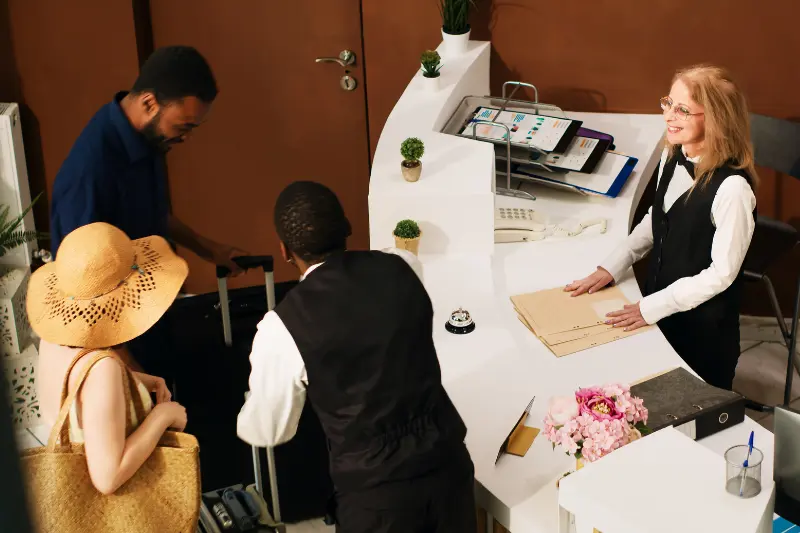
Hotel operations tips
Great marketing can fill rooms, but seamless operations keep guests coming back.
Operational excellence is what turns high occupancy into high profitability. For hotel leaders, that means building systems that cut wasted effort, anticipate demand, and empower staff to act quickly.
Here are five tips for successful hotel management and operations that go beyond the basics:
1. Create a “shadow shift” program to build cross-department empathy
Miscommunication between departments is one of the fastest ways service breaks down. A shadow shift program where staff spend a few hours working alongside another team builds understanding and smooths handoffs.
How to do it:
- Schedule monthly 2-3 hour shadow blocks (front desk with housekeeping, valet with F&B, maintenance with front desk).
- Debrief with staff after shifts. Ask “what surprised you?” and “what would make handoffs smoother?”
- Log repeat pain points and incorporate fixes into SOPs.
2. Audit your check-ins & check-outs for bottlenecks
The arrival and departure experience shapes your guests’ perception more than almost any other touchpoint. Long waits at the desk, confusing mobile check-in flows, or poorly timed staffing can sink reviews fast.
How to do it
- Track average wait times in the lobby during peak hours
- Mystery shop both mobile and in-person check-in once a quarter.
- Add express options like QR code check-outs or pre-stay registration links.
3. Build a rapid-response playbook for common disruptions
Guests forgive problems when they see fast, coordinated responses. Without a clear playbook, staff waste time escalating or improvising, which erodes trust.
How to do it:
- List your top 10 disruptions (power outage, overbooking, elevator breakdown, internet outage).
- Assign roles and responsibilities by department for each scenario.
- Draft guest communication templates and compensation guidelines so staff can act immediately.
4. Use predictive scheduling tied to occupancy forecasts
Static schedules don’t reflect the ebb and flow of demand. Predictive scheduling aligns labor with occupancy data, protecting margins and reducing staff burnout.
What to do now:
- Integrate PMS occupancy forecasts into your scheduling system.
- Run a weekly labor vs. occupancy report — are you over- or under-staffed on certain days?
- Add “flex pools” of cross-trained staff who can be called in during spikes.
5. Run a quarterly “efficiency sprint” challenge with staff input
Your frontline staff see inefficiencies that you might never catch. An efficiency sprint turns their ideas into measurable improvements.
How to do it:
- Dedicate one week each quarter to collecting improvement ideas (via surveys, comms app, or suggestion boxes).
- Select the top three changes to test immediately.
- Publicly recognize staff whose ideas get implemented.
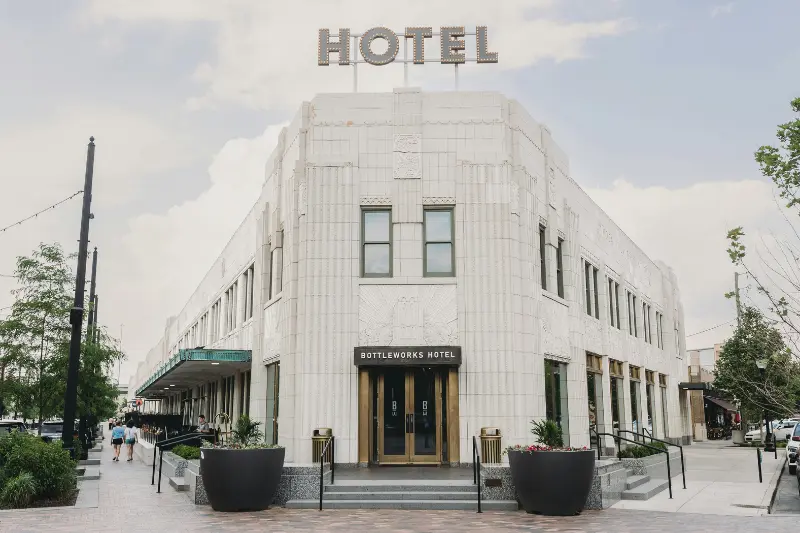
Tips for small and boutique hotels
Small and boutique hotels face unique challenges that larger brands might not relate to. But by using their agility and local character to create experiences guests can’t get elsewhere, small hotels can pull ahead.
1. Curate hyper-local in-room amenities
Generic mini-bars and coffee pods don’t tell your story. Stock rooms with items from local businesses, like locally roasted coffee, handmade soaps, or a small-batch wine. Guests feel connected to the destination, and you build goodwill with nearby businesses.
Pro move: Rotate items seasonally and leave a card introducing the maker. It turns your amenities into a discovery experience guests will post about online.
2. Build local partnerships to drive revenue
You may not have a full spa or gym, but partnerships let you offer the same value. Work with nearby restaurants, fitness studios, breweries, or galleries to create exclusive packages.
Pro move: Create two or three themed itineraries (for example, “Foodie Weekend,” “Adventure Escape”) and feature them on your website. This gives you unique SEO content while boosting local spend.
3. Turn your lobby into a flexible community hub
Boutique properties have the power to blur the line between guest spaces and local hangouts. Hosting events like pop-up markets, art showcases, or coffee tastings brings locals through your doors and makes guests feel like part of the neighborhood.
Pro move: Promote these events on social media and Eventbrite. Even if locals don’t book a room, they amplify your brand visibility.
4. Offer “choose-your-own-experience” add-ons
Flexibility is a boutique hotel’s secret weapon. Instead of rigid packages, let guests build their own stay by choosing add-ons like guided photo walks, bike rentals, mixology classes, or sunrise yoga.
Pro move: Use a QR code in rooms linking to a live “add to stay” menu. Guests can customize mid-stay, and you can adjust offerings seasonally.
5. Leverage scent and sound branding for memorability
Guests might forget the specifics of their stay, but they’ll remember how your hotel felt. A signature scent in the lobby or a playlist featuring local musicians makes your property instantly recognizable.
Pro move: Extend your scent or playlists to take-home souvenirs (candles, Spotify playlists). Guests keep engaging with your brand long after check-out.
The best tools to improve hotel management
You probably already have the basics, like a property management system. But hospitality today demands more.
Here are a few other tools to consider adding to your tech stack to skyrocket your hotel to success:
Digital tipping system
Cash tips are disappearing, but staff still rely on gratuities to feel valued and fairly compensated. A digital tipping platform like eTip lets guests tip housekeepers, valets, and front desk staff by quickly scanning a QR code — no app required. For hotel managers and operators, it also means no more headaches managing physical cash tips, tip pools, or delayed payouts.
What to look for:
- QR code flexibility (by room, department, or staff).
- Options for pooled vs. individual tips.
- Direct-to-payroll integrations for seamless reporting.
- IRS-compliant exportable reports.
Why it matters:
Hotels using eTip report a 5x increase in tip frequency and up to 30% higher staff retention.
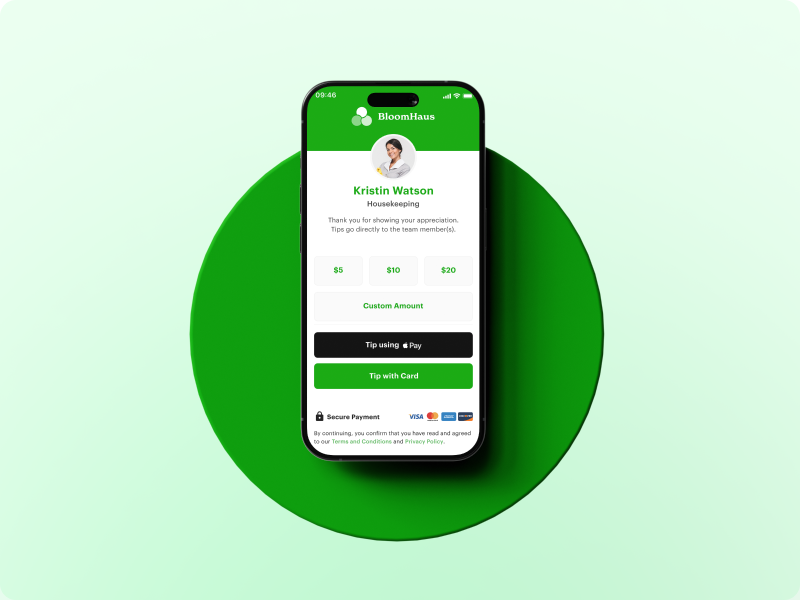
Channel manager
When your inventory isn’t accurate across OTAs, you’re at risk of double-bookings and lost revenue. A channel manager keeps your availability, pricing, and restrictions consistent across Booking.com, Expedia, Airbnb, and more, all in real time.
What to look for:
- Two-way integration with your PMS.
- Rate parity monitoring and alerts.
- Support for multi-property management.
- Robust reporting to show which channels drive the most revenue.
Why it matters:
Adjust your rate plan in the PMS once, and see it instantly reflected across every distribution channel — eliminating manual edits that waste hours weekly.
Mobile staff communication platform
Radios miss nuance, and shift notes on clipboards get lost. A mobile-first communication platform ensures every staff member, from housekeeping to F&B, sees the same updates instantly. It also gives employees a voice, which boosts morale.
What to look for:
- Push notifications and read receipts.
- Role- or department-based channels.
- Built-in recognition features (shoutouts, badges).
- Multilingual support for diverse teams.
Why it matters
During a sold-out weekend, supervisors can push real-time updates about late check-outs or VIP arrivals to every relevant team—no confusion, no missed handoffs.
Guest messaging and engagement platform
Guests expect hotel communication to be as easy as texting a friend. A messaging platform lets them request towels, book a spa slot, or ask for restaurant recommendations from their phone. It also opens new revenue opportunities for upselling.
What to look for:
- Seamless PMS integration (pulls in guest profiles and stay details).
- Automation for common requests (extra pillows, late check-out).
- Two-way texting, WhatsApp, or in-app chat.
- Analytics on response times and resolution rates.
Why it matters:
Instead of calling the front desk, a guest scans a QR code, requests late check-out via chat, and pays the fee instantly — saving time for staff and boosting RevPAR.
Maintenance management software
Maintenance issues can tank reviews faster than almost anything else. A Computerized Maintenance Management System (CMMS) keeps preventive tasks on schedule and logs every repair, so nothing slips through the cracks.
What to look for:
- Work order creation via mobile.
- Preventive maintenance scheduling (HVAC, elevators, boilers).
- Asset histories with cost tracking.
- Integration with housekeeping for room-status updates.
Why it matters
Housekeeping can flag a repair need and have it sent to maintenance instantly. No paper slips, no delays.
Refine your hotel management strategy with eTip
At the end of the day, great hotel management is about people — your staff and your guests. While technology and strategy matter, retention and satisfaction are what make the biggest difference.
eTip gives hotels a simple way to turn tipping into a competitive advantage.
By digitizing the tipping process, you’ll increase staff earnings, eliminate the hassle of manual tip distribution, and make it effortless for guests to show appreciation.
Set up digital tipping at your hotel — book a demo with us to learn how.
Join the eTip community!
We'll send the latest content & special releases directly to your inbox.
Ready to join the community?
Receive the latest & greatest content from eTip, sent directly to your preferred inbox!
